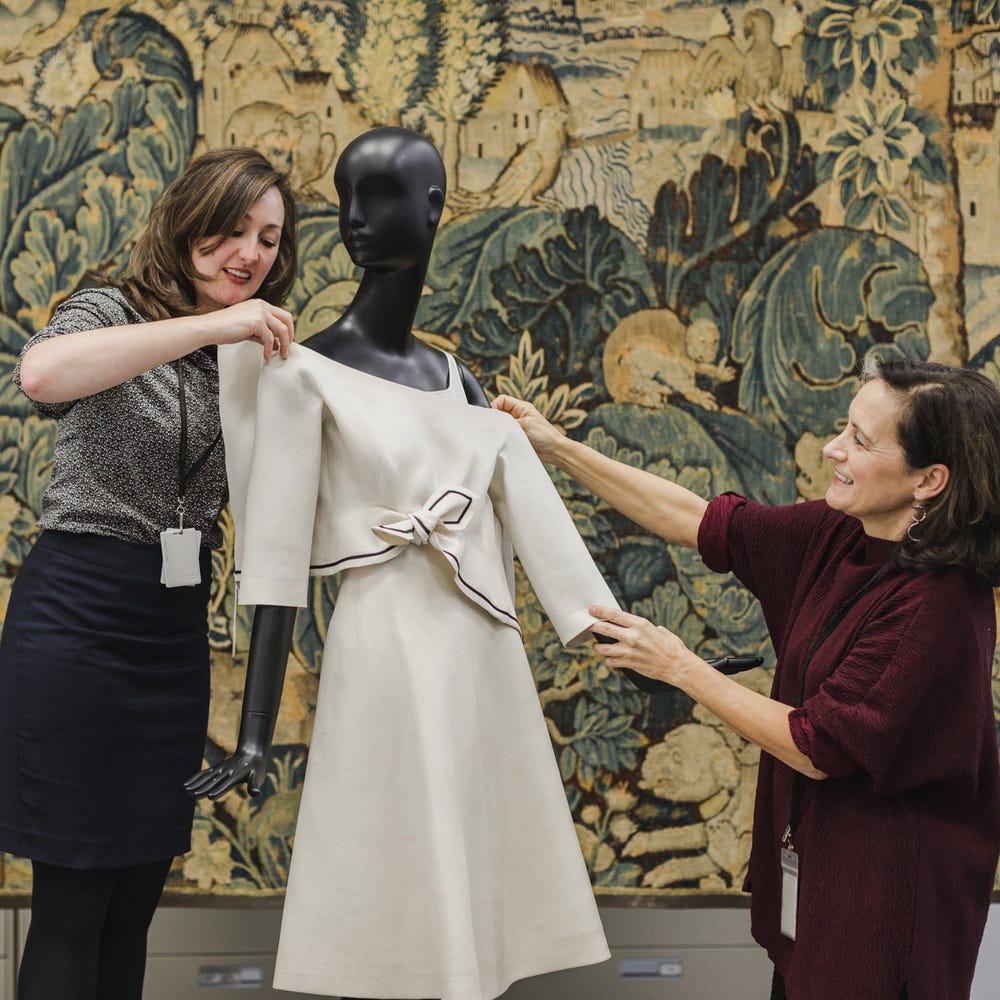How Do You Recycle a 15,000 Lb. Sand Painting?
By Christopher Dawe, associate director of facilities and operations
June 20, 2024
Detail of Lee Mingwei’s Guernica in Sand, 2024. Photograph by Randy Dodson
In our throwaway society, it is often more difficult to recycle something than it is to simply send it to the landfill. As an organization, we are working hard to send less material to the dump, looking for any ways to reduce waste.
Lee Mingwei’s Guernica in Sand (2006–present) is a sand painting that partially recreates Picasso’s iconic Guernica (1937). Focusing on the themes of impermanence and transformation, it is actually destroyed in a one-time performance where the artist and performers walk over the sand and sweep the colors together. It also makes use of an extraordinary amount of sand: 15,000 pounds.
Lee Mingwei: Rituals of Care opening day, de Young, 2024. Photograph © Gary Sexton
Our department was tasked with figuring out how to bring the sand into the museum, how to stage it for public view, and what to do with it afterward. Many of us were dumbfounded. I remember my colleague saying, “Wow, that’s a lot of sand.” Yes, yes it is.
Of course, we could’ve simply thrown away the sand. (We would’ve needed to order a special dumpster.) But that would be wasteful. Paying to throw away sand is such an ugly action. Boo. No fun.
So we tried something else: I approached schools (sandboxes, right?), art institutions, and San Francisco Recreation and Park, but no one wanted sand colors that had been mixed together, even for free.
And then, while our plant vendor was trimming the palm trees in front of the de Young, they called out a low spot in the lawn. They didn’t want to drive their lift into it, thinking about safety. The low spot had settled after the display of a Keith Haring sculpture, and we came up with a plan to fill it with the sand.
Keith Haring (1958–1990), Untitled (Three Dancing Figures), 20th century. Enamel on aluminum, Collection of the City and County of San Francisco. © Keith Haring Foundation. Photograph by Randy Dodson
We called up the structural engineer that designed the de Young to ensure that depositing the sand was safe. (The front lawn is above the Music Concourse Garage, and the palm trees are planted on top of the columns supporting the garage — this building is complicated!)
We brought SF Rec + Park in as a partner to design the plan. Most important, we needed to figure out how to get the sand to the front of the building. We decided it would get vacuumed and scooped up with shovels, and then transported to the de Young’s loading dock. From there, it would be picked up by SF Rec + Park’s mini dump trucks. It was a beautiful plan.
Museum technicians raking, scooping, and vacuuming sand
Lars Nylander, woodshop operations specialist, modeling the vacuuming technique
Finally, on a cool, sunny April morning, we put all those thousands of pounds of sand into the hole in the front lawn. Persistence indeed has its benefits.
Installing the sand
After the grass grew in. Would you have ever known?
As it says on our exhibition web page:
Transforming ordinary actions like writing, sweeping, mending, or breathing into rituals of care, Lee Mingwei’s works encourage us to find beauty and solace in the small acts that define everyday life.
If that isn’t everything that this project was about, I’ll eat sand!
So, when you visit, know that even though Guernica in Sand was erased, it will remain a part of the de Young forever. The grass truly is greener.











